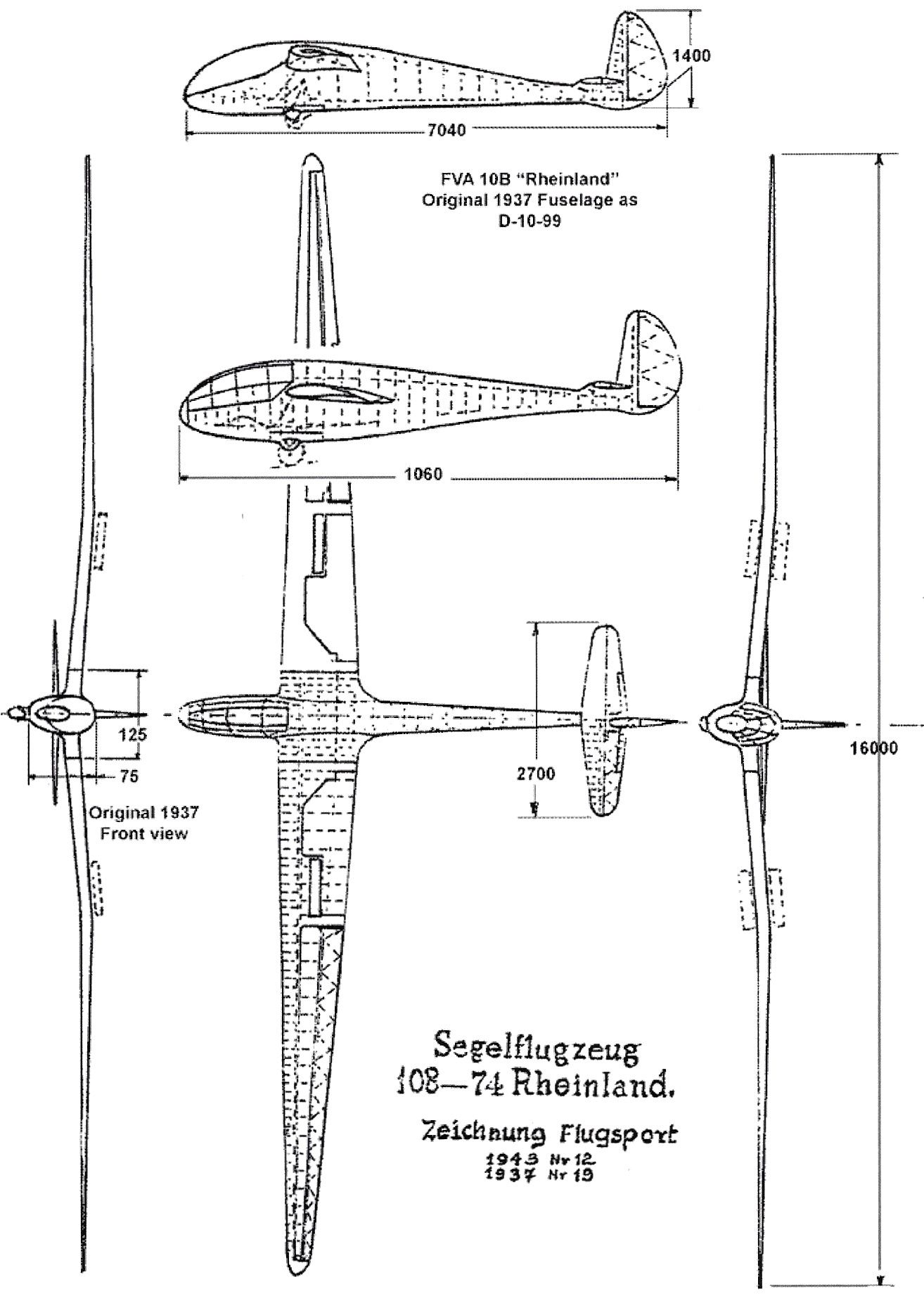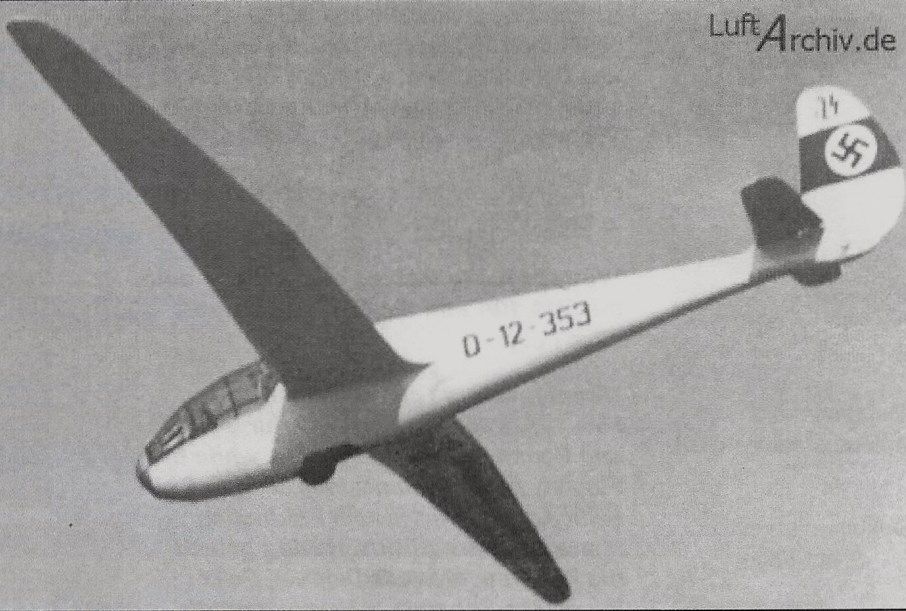Model of the monath april 2019 Akaflieg
FVA (Akaflieg - Aerodynamical Engineering Students Association Aachen)
The FVA was founded by Prof. Kármán and his assistant Wolfgang Klemperer at the RWTH (Technical University) Aachen immediately after the First World War. Until today it serves as a place of applied flight science.
The first successes at the beginning of the 20s were the light gliders "Black Devil" and "Blue Mouse", which founded glider flying on the Rhön Mountains. The development work then faded out there, people were more occupied with practical flying.
The then student Hans Sander, later chief test pilot at Focke-Wulf in Bremen, in cooperation with Karl Dötsch built a glider as a diploma thesis, the FVA 9, and called it Blue Mouse 2. For the first time wind tunnel research took place. Due to the lack of a pilot, not much became of it. It was the time to turn from slope wind flying to thermal flying.
Based on these experiences, Felix Kracht (later an Airbus executive) built the F.V.A. 10 A Rheinland, which crossed the Alps in 1936. The aim was to reduce the overall drag (closed canopies, greater wing extension, fuselage shape optimisation) and increase the glide ratios.
Around 1935 main developers were Artur Getto and Benno Sann while the further development F.V.A, 10 B Rheinland was revised by Felix Kracht. He was assisted by the entrepreneur Schmetz, who operated a sewing needle factory. He later became well known in aviation circles when he, Haase and Kensche developed the high-performance HKS 1-3 gliders with which Haase achieved world beating performances at the end of the 1950s.
The 10 B showed all kinds of innovations: The transition between the wings and the fuselage was optimized and the fuselage was already slightly constricted behind the cockpit, as is common today everywhere. In addition, the aerodynamical efficient full-vision cockpit was introduced, so that the hull appeared club-shaped in profile. The popular gull-like wing design was adopted. Also a retractable landing gear was developed, after a retractable runner did not prove itself.
2.
The (seagull-) kink-wing was three-parted, its middle part was firmly connected with the fuselage without a gap, reducing drag. The wing was single-armed with a torsion-resistant leading edge (introduced here in Hannover in the year 1920 at the Vampyr). All control elements were ball-bearing-mounted and thus smooth-running. The wing load was about 20 kg/m², the aspect ratio 21.9. These were excellent values which were only surpassed by the world-famous Schleicher Ka 6 in the 1950s. The Rheinland was a top product in its time! Kracht achieved best performances with it in Austria in 1937.
Some successes were achieved in the Rhön and other competitions. And a series production was organized at the company Schmetz. The exact number of airplanes is not known, maybe there were about 29. One flew in GB, one in CSSR, several were flown after the war in Germany by the RAF. One (D-12-354) can be seen today in the Brookland Air Museum/GB.
Technical data:
wingspan 16.00 m, length 7.04 m, wing area 11.70 m², aspect ratio 21.9, empty mass (with parachute) 142 kg, take-off weight 240 kg, payload 98 kg, lowest sink rate 0.60 m/s, glide ratio 1:28


